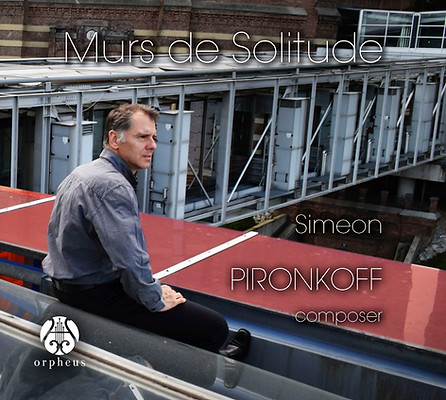Murs de Solitude
Simeon Pironkoff
Murs de Solitude - Simeon Pironkoff (OR 3012 - 9720)
Category: Contemporary Music, Chamber Music Ensemble (CD)
Simeon Pironkoff, composer
CD Tracks
1. Passi - 11:54 (1992)
Andreas Lindenbaum: cello
2. Reflex - 06:44 (1990/1996)
Sylvie Lacroix: flute
3. From a certain distance - 07:03 (2000)
Sabine Federspieler: recorder
Christian Horvath: guitar
4. Muros de la soledad: Konstellation für Klavier - 25:00 (2000)
Marino Formenti, piano
CD
CD Content
Passi per violoncello solo
The Passi were written in 1992. In exploring a gradual step-by-step (in Italian passi = steps) development marked by distortion, densification, or lucidity, the composer determines how long an acoustic process that builds and ebbs rapidly or slowly could be perceived by the listener as a coherent whole.
111
Reflex for solo flute (1990, rev. 1996)
The piece Reflex for solo flute is the result of a six-year process. The title Reflex can be interpreted on various levels: as a direct reaction (in the sense of a bouncing back) as well as an emotionally processed reflection. Thus the composition process departs from the directly associative in search of paths that lead to a possible poetic translation of these aspects.
From a certain distance: a dialogue for alto recorder and guitar
The composition From a Certain Distance was commissioned by the guitar duo Federspieler / Horvath and completed in 2000. The mise en scène of the potential conflictual situations (as possible constitutive elements of a dialogue) in the form or a richly varied musical gestuallity was the compositional focus of the piece. A succession of meticulously composed short to extremely short segments, each in a different tempo, has been assigned to each instrument.
Muros de la Soledad: Konstellation für Klavier
The piece was originally embedded in the project "MISSA" as a kind of proprium because - like the Missa ad fugam by Josquin - it is an example of highly developed polyphony that allows us to consider the phenomenon of superimposition from this perspective. Just as Josquin's poluphony is about the paired continued development of voices within a canonical structure, here too we are deadling whith the parallel continuer development of layers (as in the abovementioned example, 7:6 paired with 5:4).





